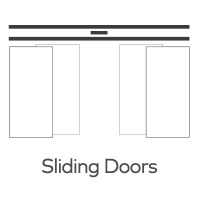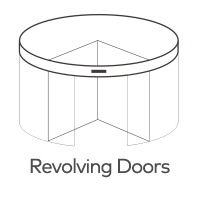How do you test the effectiveness of safety sensors on automatic doors?
Safety sensors are critical components of automatic doors, ensuring they operate safely by detecting obstacles and preventing accidents. Regular testing of these sensors is essential to maintain their effectiveness and ensure the safety of users. This article provides a step-by-step guide on how to test the effectiveness of safety sensors on automatic doors.

Understanding Safety Sensors
Before diving into the testing process, it's important to understand the types of safety sensors commonly used in automatic doors:
Infrared Sensors: These sensors use infrared light to detect obstacles.
Pressure Sensors: These sensors detect pressure changes when an object is in the door’s path.
Ultrasonic Sensors: These sensors use sound waves to detect obstacles.
Combination Sensors: These sensors use a combination of technologies to enhance detection accuracy.
Step-by-Step Guide to Testing Safety Sensors
1. Visual Inspection
Check Sensor Alignment: Ensure that sensors are properly aligned. Misalignment can prevent the sensors from functioning correctly.
Inspect for Damage: Look for any visible damage to the sensors or wiring that could impair their operation.
2. Clean the Sensors
Remove Dust and Debris: Use a soft, dry cloth to gently clean the sensor lenses. Dirt and debris can obstruct the sensors’ ability to detect obstacles.
Ensure Clear Line of Sight: Make sure there are no obstructions blocking the sensors.
3. Test Using an Object
Place an Object in the Doorway: Use a solid object, such as a box or a broomstick, to simulate an obstacle. Place it in the path of the door where the sensors are located.
Observe Door Reaction: Activate the automatic door and observe its reaction. The door should stop closing and reverse direction or remain open when the object is detected.
4. Test Pressure Sensors (if applicable)
Step on the Pressure Mat: If your automatic door has pressure sensors, step on the pressure mat or apply weight to the pressure-sensitive area.
Check Door Response: The door should stop closing and reverse direction or remain open when pressure is applied.
5. Test Each Sensor Individually
Cover One Sensor: Use a piece of cardboard to temporarily cover one of the sensors.
Activate the Door: Test the door’s response. The door should recognize the covered sensor as an obstacle and react accordingly.
Repeat for All Sensors: Uncover the first sensor and repeat the process for each sensor individually to ensure all are functioning properly.
6. Check Sensor Sensitivity
Gradually Introduce Smaller Objects: Test the sensors with progressively smaller objects to check their sensitivity. The sensors should detect small objects that could potentially be a hazard.
Adjust Sensitivity Settings: If the sensors do not detect smaller objects, consult the user manual to adjust the sensitivity settings if possible.
7. Conduct Regular Functionality Tests
Schedule Routine Tests: Incorporate regular sensor testing into your maintenance routine. Monthly checks are recommended to ensure ongoing effectiveness.
Document Results: Keep a log of each test, noting any issues and actions taken to resolve them. This documentation can be useful for maintenance records and compliance with safety regulations.
Troubleshooting Common Issues
Sensors Not Detecting Obstacles:
Realign Sensors: Ensure sensors are properly aligned and have a clear line of sight.
Check Connections: Inspect wiring and connections for any signs of damage or disconnection.
Clean Lenses: Ensure sensor lenses are clean and free from obstructions.
Intermittent Sensor Performance:
Check Power Supply: Ensure that sensors are receiving consistent power.
Inspect for Interference: Look for sources of interference, such as other electronic devices, that may affect sensor performance.
False Alarms:
Adjust Sensitivity: Reduce sensor sensitivity if they are triggering false alarms due to environmental factors.
Check Installation: Ensure that sensors are installed at the correct height and angle as per manufacturer recommendations.
Conclusion
Testing the effectiveness of safety sensors on automatic doors is crucial for ensuring the safety of users and the smooth operation of the doors. Regular testing, combined with proper maintenance, helps to identify and resolve issues before they lead to accidents or malfunctions. By following the steps outlined in this guide, you can ensure that your automatic door safety sensors remain effective and reliable, providing peace of mind and enhanced safety for everyone using the doors.







